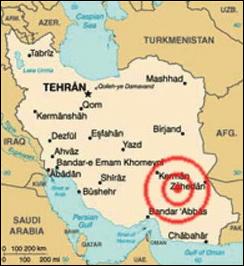
|
|

|
|
| April 19, 2024 |
|
Earth ‘heals’ after big quake 
For the first time, scientists have watched as the Earth’s surface “heals” itself following the disruptive jolt of an earthquake, in this case, the 2003 temblor that devastated Bam, Iran.
The fault under the city erupted in a M6.6 quake on December 26th that year, leveling the town and killing 30,000 people. But though devastation was evident, there was no clear fault mark at the surface. Seismologists had noticed similar mismatches between depth and surface fault movements during other earthquakes. One theory was that the jolt from the earthquake deformed the surface rock, causing it to expand instead of fracturing in a visible surface fault. The rock is then thought to "heal" as it contracts again. The finding also helps explain other earthquakes with a similar lack of clear faulting at the surface, such as the 7.3-magnitude Landers earthquake that struck the Mojave Desert in 1992. The fault that ruptured was thought to be inactive because of the lack of surface features. "By studying this deformation that happened after the earthquake, we learn how this fault is staying buried, even though it's active," Eric Fielding of Caltech said. Scientists at UC Riverside assisted in exposing the buried fault. The results have implications for assessing the risk of future earthquakes associated with known buried faults in Southern California. (Sources: UCR, Journal Nature and livescience.com) Story Date: March 7, 2009
|